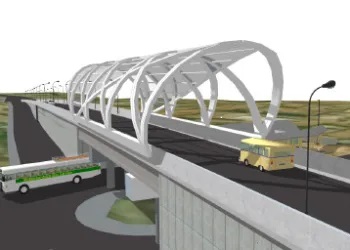 ...It was apparent that the state government bypassed all bid evaluation criteria, including technical competence, experience, quality, safety, and sustainability in determining the so-called winner of the (Babatunde Idiagbon Flyover) contract bid, except, perhaps for its price.
...It was apparent that the state government bypassed all bid evaluation criteria, including technical competence, experience, quality, safety, and sustainability in determining the so-called winner of the (Babatunde Idiagbon Flyover) contract bid, except, perhaps for its price.
Gbolahan Balogun writes on the controversies trailing the Babatunde Idiagbon Flyover, Tanke, Ilorin.
Not many people know the company by the name Etteh Aro & Partners until someone reels out such buildings as the United Bank for Africa headquarters, the CBN headquarters, the Federal Palace Hotel, Lagos, the Tafawa Balewa Square, Uyo Stadium, the Cultural Centre in Ibadan, the Mike Adenuga Tower, and such landmark constructions as the Onex Abuja Road, Okrika Creek Bridge, Abam-Ama-George-Ama Bridge, Rivers State, East-West Coastal Bridges and Kano flyover. This is the company behind the planning, design, and execution of these towering and alluring projects.
At the tail end of 2021, Etteh Aro & Partners proposed and designed for the Kwara State government, what it called an ‘Iconic Bridge for the city of Ilorin’. The overhead bridge, it said, would serve a dual purpose of reducing the traffic congestion around Tanke areas and at the same time present an aesthetic and historic image of the city to visitors and the people, serving to have an emotional impact through iconic images associated with Kwara state.
The company wrote in its proposal: “We were keen to create a forward-looking construct to respond to Kwara/Ilorin’s transit challenge as well as increasing artistic, cultural, and economic demands. A grade change intervention, located along an arterial road that connects major parts of the city, will act as an urban gateway for locals and tourists.
“For this purpose, we offer a new typology that takes its inspiration from the blossoming of the lotus flower. The lotus flower is a poignant symbol of growth, rebirth, and beauty.
“The lotus heavily influences the aesthetic performance of the proposed build. A layered combination of geometric petals, mesh panels, and grid supports weave complexity by combining and interlocking in a formal progression that encases the central span of the ramp”
Many Kwarans faulted this proposal when Governor Abdulrahman Abdulrahman gave his nod to it. While some described it as “just another symbol of banality that is all too familiar”, and others, as, the “same tunnel of indiscretion”, others said it was in line with Governor Abdulrahman Abdulrahman’s vision for an upscale project that would resonate with the people of Kwara, more so, since it had been accommodated in the 27 billion Naira loan it accessed in the capital market. Before the proposal came, the Governor had been accused of having nothing tangible to showcase for his first three years in office, compared to his compatriots in other states with similar revenue strength and verves.
Opinions vary on the need for an overhead bridge on Tanke Road. Whereas many hailed the governor’s foresight, especially since his predecessors had opened up a new road that links the Police F Division Road from the Pipeline area towards the General Hospital, coupled with the gridlock that sets at the mouth of these intersections, a flyover, they reasoned, was appropriate. But a great many also believed that a more sustainable way to address the challenge on Tanke Road is to expand the road, open alternative roads, and enforce traffic regulations. “The real benefit is that aside from addressing the challenge sustainably, the areas that are covered by the alternative routes will also witness improved economic and commercial activities”, Seun Awogbenle, a public commentator and youth advocate, wrote in one of his write-ups on the project. Dr Oladipo Akanbi, a lecturer in the Faculty of Agriculture, University of Ilorin and National President of the Association of Nigeria Authors, though more circumspect, wrote in his ‘Random Thoughts’ “May I commend the government of Kwara State for their efforts in maintaining various access roads across the towns and cities within the state. Their school rehabilitation programmes, water projects, and interlock pavements among others are projects worthy of commendation.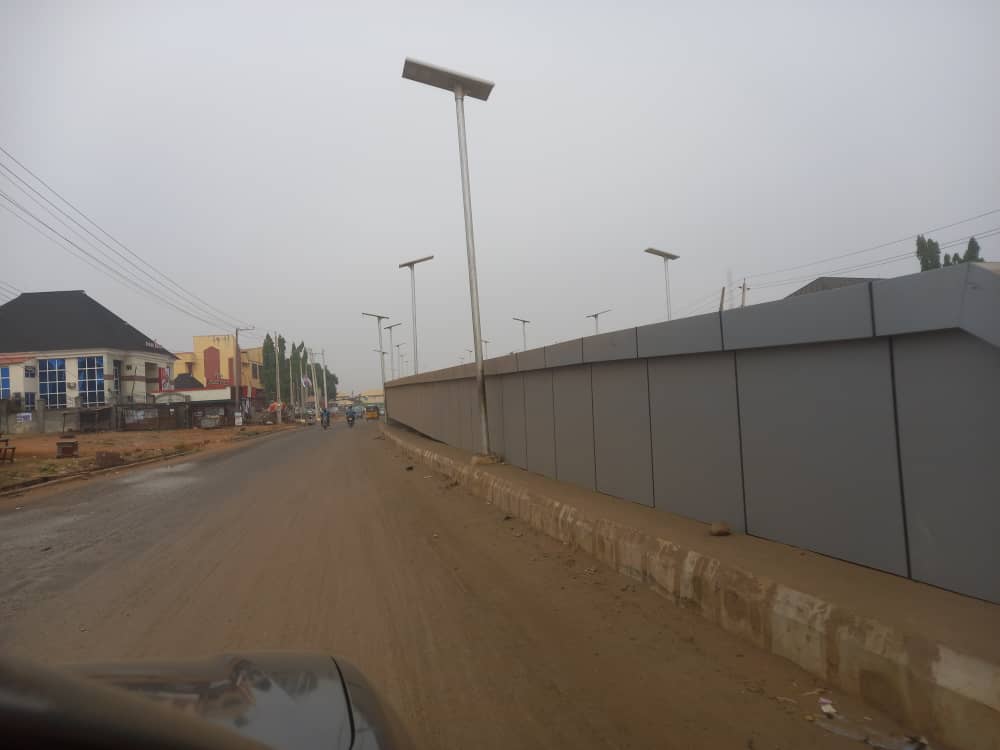
“However, I wish to raise issues over some projects that I consider unnecessary and for which money to be expended on them can be put to some better alternative uses!
Ordinarily, the idea of an overhead bridge in Tanke may be considered worthwhile, but I doubt if it will solve any problem because it will span only a short length. The traffic problem can always resurge along the line, particularly in the Tanke Oke Odo area.
“Increasing the number of lanes and constructing adjacent access-road networks would have been a better option. Tanke Oke odo to Agbabiaka to Ganmo should be linked. Judges' quarters to Oke Odo will offer a more direct route for Basin Zango commuters.
“Simultaneously building some expensive projects, to my mind, is not cost-efficient, particularly, for a state with low internally generated revenue – for instance are the IT hub, International Conference Centre, bridge building, etc and which incidentally are to be financed from the proceeds of some huge loan facility”, Akanbi counselled.
If the governor’s media minder did not see any offence in Akanbi’s comment, they did in Awogbenle’s. He was described as one who came into the fray as a hatchet man to titillate the public against Governor Abdulrazaq’s administration.
Awkward contract award, crooked job
Granted that governance demands openness, accountability and fair play in the management of resources, the ways and manners the Tanke overhead bridge was awarded put paid to the very meaning of transparency and probity. It is unclear what project delivery method was employed by the state government when it announced, through a press release dated November 2, 2021, the award of the contract to J.M.K Construction at the total sum of #2,227,899,200:00 with a completion date of 12 months. The choice of J.M.K Construction for a job that has been described in superlative terms immediately got tongues wagging. For many, if the state government, for whatever reason would bypass Etteh Aro & Partners, the designer of the iconic bridge, for whatever reasons, it should not be for a construction company with an unenviable albatross tied to its neck. JMK Construction, as revealed by FreshInsight, an online publication is the sister company or even a new name for Bulletine Construction Company, as “a search with the Corporate Affairs Commission (CAC) showed that the two companies are located on the same address; No 7, Saadu Alanamu Street, G.R.A, Ilorin”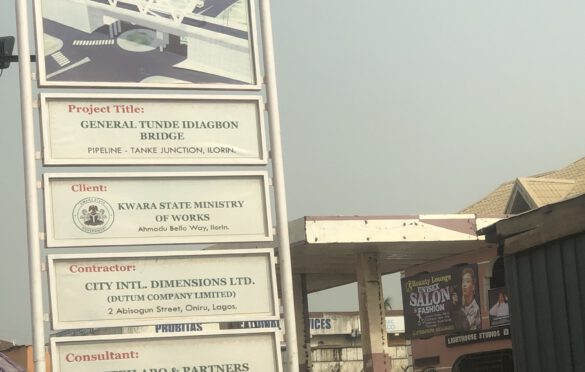
It was apparent that the state government bypassed all bid evaluation criteria, including technical competence, experience, quality, safety, and sustainability in determining the so-called winner of the contract bid, except, perhaps for its price. The Premium Times on September 13, 2012, reported the collapse of Odili Bridge, a flyover in Rivers State constructed by Bulletine Construction Company, barely seven years after its completion. This is also a company cited for incompetence and negligence by the Nigerian Government when it terminated the N15.1 billion Abaji-Koton-Karfe road project (section III of the Abuja-Lokoja Road dualisation) awarded to it in 2018. It was reported that the contractor had received about N414.2 million for services it had not rendered.
Perhaps, to mitigate against her misjudgment, the state made a detour, withdrew the contract awarded to J.M.K Construction Company, and re-awarded it to City International Dimensions Construction Ltd at a cost of #2,410,338,700:00, with a completion date of 14 months. The company got an upward variation of #182,439,500 and two months longer than JMK, according to a report by Freshinsight. All these were clandestinely made except for the project site signage which announced the new beneficiary of the project. The City International Dimensions Construction Ltd, a civil engineering firm with its headquarters at 40, Ebitu Okiwe Street, Abuja thus set to work at both its workyard near the Fate-Tanke Community School and the project site. With its slow pace of work, the discomforts it gives to the residents, traders and commuters on the road and its inability to meet three different deadlines promised by the government, it was apparent that the contractor was a mismatch for the job. When finally the precast concrete element, including the beams, columns, floor slabs and cladding panels were moved into their final positions, what appeared as Babatunde Idiagbon Overhead Bridge in Tanke was a disappointing sight or at most a mere replica of the original architectural design, which promised a sleek and modern structure that would blend in with the surroundings. Instead, it looks like a haphazard pile of concrete and metal, with no sense of harmony or beauty. Many of the commuters on the road, especially the highly cerebral staff of the University of Ilorin provided some metaphors and similes to describe what they saw: “This bridge looks like a giant Lego set that was put together by a toddler”; “The bridge is a mismatched patchwork of concrete and steel that clashes with the surroundings”; “The bridge is a monstrosity that defies the laws of physics and aesthetics”. There were also exaggerations by some, who would later incur the wrath of the government: “This bridge is a disaster waiting to happen, with cracks and gaps everywhere”.
As controversies on the safety of the bridge mixed with the expression of discomfort by Tanke residents and commuters, the State deplored the media to seek the understanding of the public and to give assurance of early completion, including the safety of the overhead bridge. The then Commissioner for Works, Mr Rotimi Iliasu, on December 13, 2022, while taking the media on an on-the-spot assessment visit to the project site expressed satisfaction about the level of the job done so far and also hailed the contractor for doing a quality job, saying, “We are not doing anything less than the expectations of our people” YOU CAN ALSO READ: Pinnacles Resource Centre: A Nature Haven and Intellectual Hub
Although the contractor intensified efforts towards the timely completion of the project and, with time, completed the stone base paving and asphalt laying of the overhead bridge and the roadways, what still came out was the mind-numbing appearance and shoddy construction. A civil engineer and resident of Tanke, Chuks Enuani, while speaking with Midlandpost wondered if Babatunde Idiagbon Overhead Bridge has a clear structural system. “In construction as this, it is necessary to make sure that the load-bearing elements of the bridge structure are reduced to as minimum as possible. The structural shape, he said, “should provide an aesthetically appealing view and a recognizable flow of force.
“One of the elements of a bridge structure that plays a significant role in its aesthetic is the presence of a balanced ratio between structural members. A well-proportioned cross-section reflects elegance, symmetry, and sound engineering. The contractor doesn’t seem to consider these, or there were probably human errors that were not revised at an appropriate time, by the consultant or whoever was supposed to do it”. He said.
On the safety of the overhead bridge, Enuani said “Construction engineering activity requires decision-making that involves a relatively large number of risk factors that are related not only to model uncertainties but also to human proneness to commit errors.
“Human errors are inevitable and have a significant influence on the safety of building structures. However, the reliability required for the structure maintenance is achieved by applying quality management measures in design, execution and use. If the correct quality control system is applied from the conception stage to the finishing, and if errors are revised in due time, then there would likely not be any problem.
“For example, it is expected that before construction begins, some experienced engineers must have done the soil mechanics test near the bridge site for strength, depth, land layout, stability and other elements to ensure the safety and durability of the final structure. It is also expected that final testing and inspections would have been carried out before a project is certified for use”, he clarified.
Despite Enuani’s perception, it is unlikely that the controversies surrounding the ‘Kwara Iconic Bridge’ will diminish soon. About three weeks back, Tanke residents received as host, a new construction company, whose machinery and equipment were simply branded Craneburg. They woke up to see some brand-new excavators, cranes, skid loaders, backhoes, air compressors, graders, asphalt milling machines and pavers, and of course, some new site engineers. About a week before, a lone foreign craftsman had started work supervising some artisans mounting frames for the cladding – an aluminium covering that will eventually envelop the structural deformity and improve the appearance of Tunde Idiagbon Bridge. What is not known is the suitability of Aluco Board (aluminium composite panel (ACP) for bridge cladding and if it is part of the structural component of the original design. Dr Adekunle Olaniyi, a civil engineer and part-time lecturer explained that cladding normally serves protective and aesthetic functions for bridges and could come in many forms. “What we normally have around here as cladding are concrete components designed and cast with desired shapes and patterns.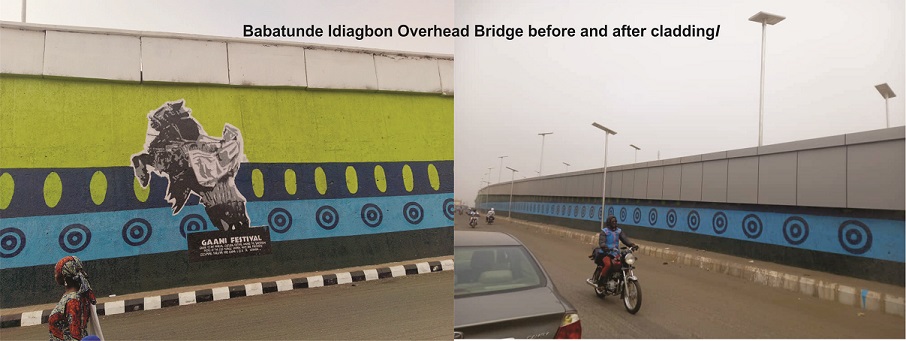
“The use of Aluco board depends on several factors, including the bridge’s design, load-bearing requirements, and environmental conditions. While ACP is lightweight and offers design flexibility, its use in bridge cladding should be carefully evaluated by structural engineers to ensure it meets safety standards and can withstand the specific conditions of the bridge, including wind loads, traffic vibrations, and potential impacts. Consulting with experts in bridge design and materials is essential to make an informed decision on whether it will stand the test of time”, he said.
Craneburg Construction Company Salvage mission
As Craneburg dug into the already tarred road including the overhead bridge, grinding up asphalt surface from a couple of inches to a full-depth removal in apparent preparation for a pavement resurfacing, it became glaring that the State government had confirmed the fear of the people it referred to as the carping critics of the Tanke Bridge project and would no longer be able to silence them. When the new engineers were seen doing structural and condition assessments of the bridge, they became more vociferous in their criticisms especially on social media ridiculing what they called a damage control measure and a remarkable penny-wise-pound-foolish attitude. Many reasoned that if the project had been awarded to a competent contractor at the appropriate rate from the beginning, a one-year project would not have dragged to three years with the financial implications and the hardship to the residents.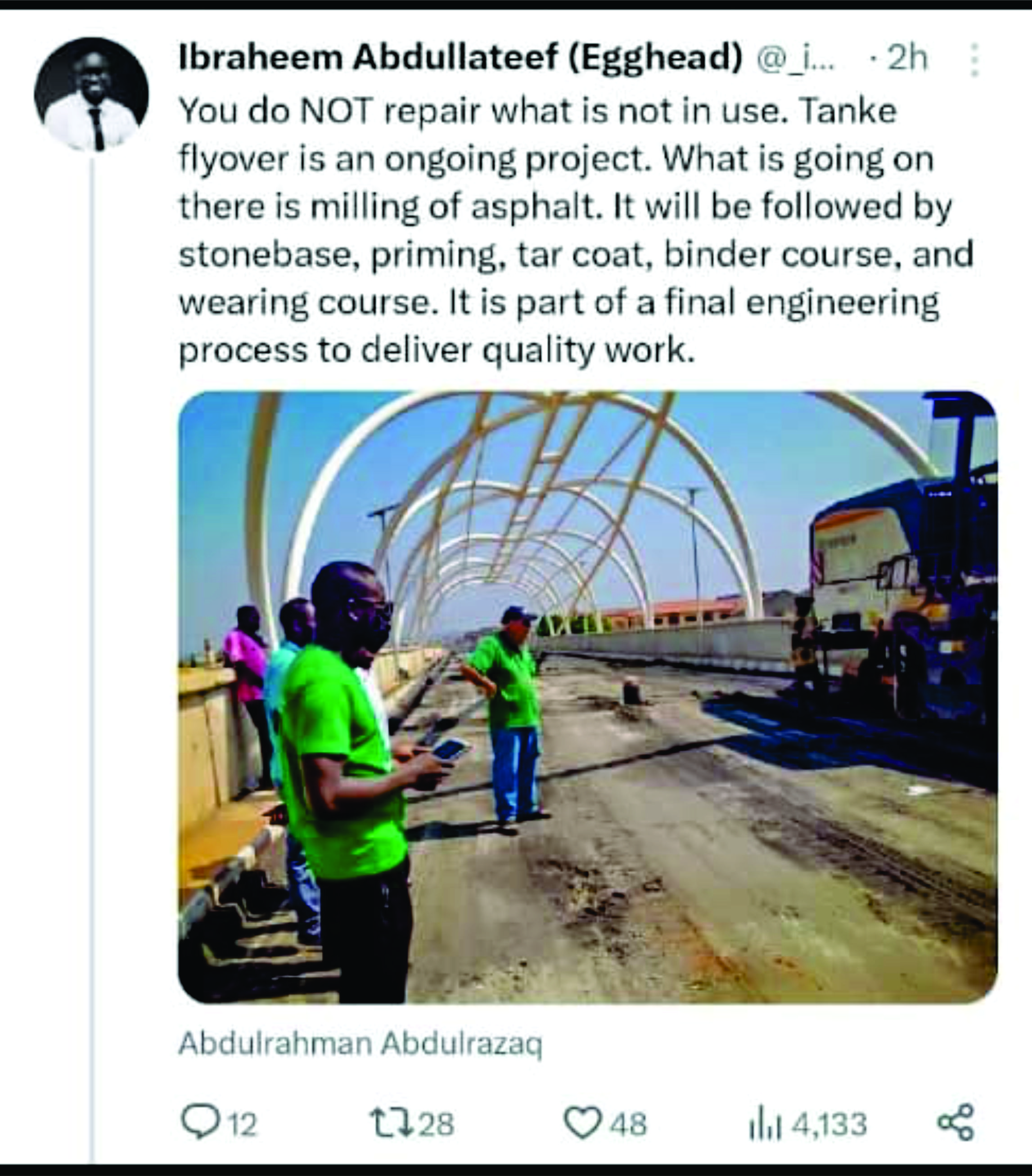
However, the State government insists that there is nothing untoward in the Babatunde Idiagbon Flyover project. Mr Ibraheem Abdullateef (Egghead), Senior Special Assistant to the Governor on Communication, in response to a critic, wrote on his Twitter handle: “You do not repair what is not in use. Tanke Flyover is an ongoing project. There is milling of asphalt. It will be followed by stone base, priming, tar coat, binder course, and wearing course. It is part of a final engineering process to deliver quality work” He said.
His remarks might have further incensed Kwarans. Engineer Abdulraheem Olaitan, a registered COREN member raised the posers: “Why the need for 'asphalt milling' if the contractor had done a good job on the milled asphalt pavement? Were there any irregularities on the abutment section that warrant asphalt milling? Was the milled asphaltic pavement resting on stone-base, or binder coarse? If YES, why the a need for the introduction of another new stone base, priming and binder course? Who bears the expense for the review — the contractor or the client? Won't the newly proposed stone base and binder course amount to additional axle loadings? If NO, why were the layers omitted in the first place? Was it deliberate negligence on the part of the contractor, consultant or client? Or, was there any settlement at the abutment section?
He explained: “In highway engineering, it is only when the contractor is trying to restore an unleveled or bumpy asphaltic pavement that asphalt milling can be done before any overlay or, when the asphaltic pavement has some irregularities (like potholes, cracks, etc) asphalt milling comes into play; or, when there is a differential settlement of pavement on the bridge abutment due to insufficient compaction or consolidation and, there is a need to fill up the gap”
Navigating the Implications
That the Kwara State government has changed the contractor handling its famed Iconic Bridge’ more than two times is not in doubt This decision, one would believe, is driven by the commitment to construct a standard and safe bridge. However, the decision also raises important considerations regarding the implications for both the project and the community.
Dr Oba Abdulkadir La’aro, a Development Communication expert, member, of the Nigeria Institute of Public Relations and faculty member in the Department of Mass Communication, University of Ilorin offers an insight. “Firstly, the frequent change in contractors introduces an element of uncertainty, potentially leading to delays in project completion. Each transition requires time for the new contractors to familiarise themselves with the project details, possibly resulting in setbacks that could have long-lasting effects on the community’s mobility and safety, as we are seeing today.
“Secondly, it has become a challenging public relations phenomenon for the media team. The public perception is not rosy and favourable to the government. Yet, the team has the professional “burden” of explaining a highly technical project to the public. Well, to the extent of the fact available to them and disclosable in appropriate context. They are doing their best. But reticent as a government PR policy would not help”
“Moreover, the financial repercussions cannot be ignored. The cost of terminating contracts and renegotiating with new contractors may strain the project budget, with potential knock-on effects on other essential public services. In all honesty, it has become imperative to scrutinise the budget allocation for the project and assess how these changes align with the state’s overall financial priorities.
“The noise that we hear today is about the public perception of the project. Repeated changes will likely erode public trust and confidence in the project’s success. So, addressing the concerns of residents and people who rely on the bridge for their daily commutes is paramount.
“In all, I believe a clear communication about the reasons behind the changes and the governor’s commitment to ensuring a robust and safe bridge is essential for maintaining public support. He submitted.




Comments powered by CComment